kottke.org posts about Flickr
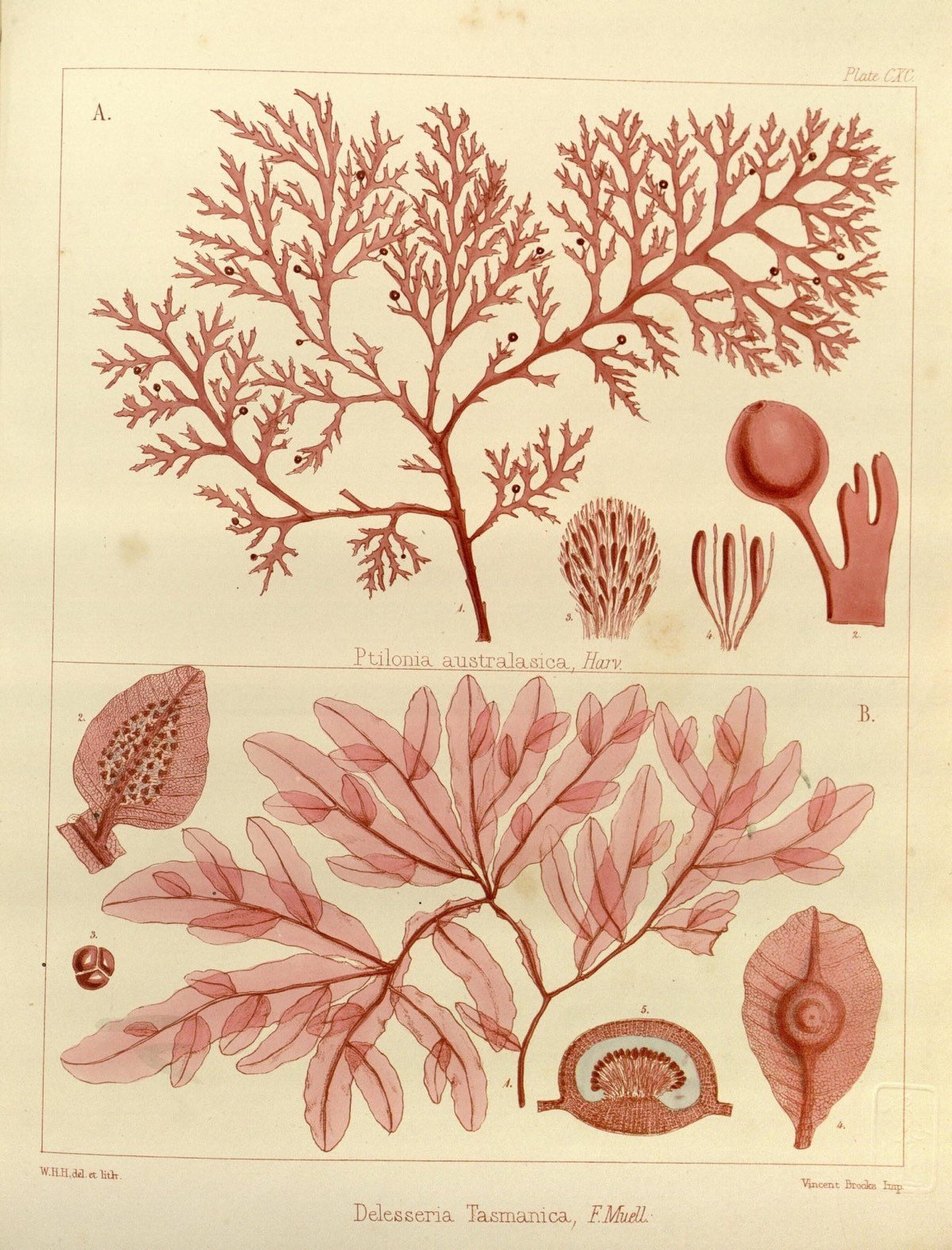

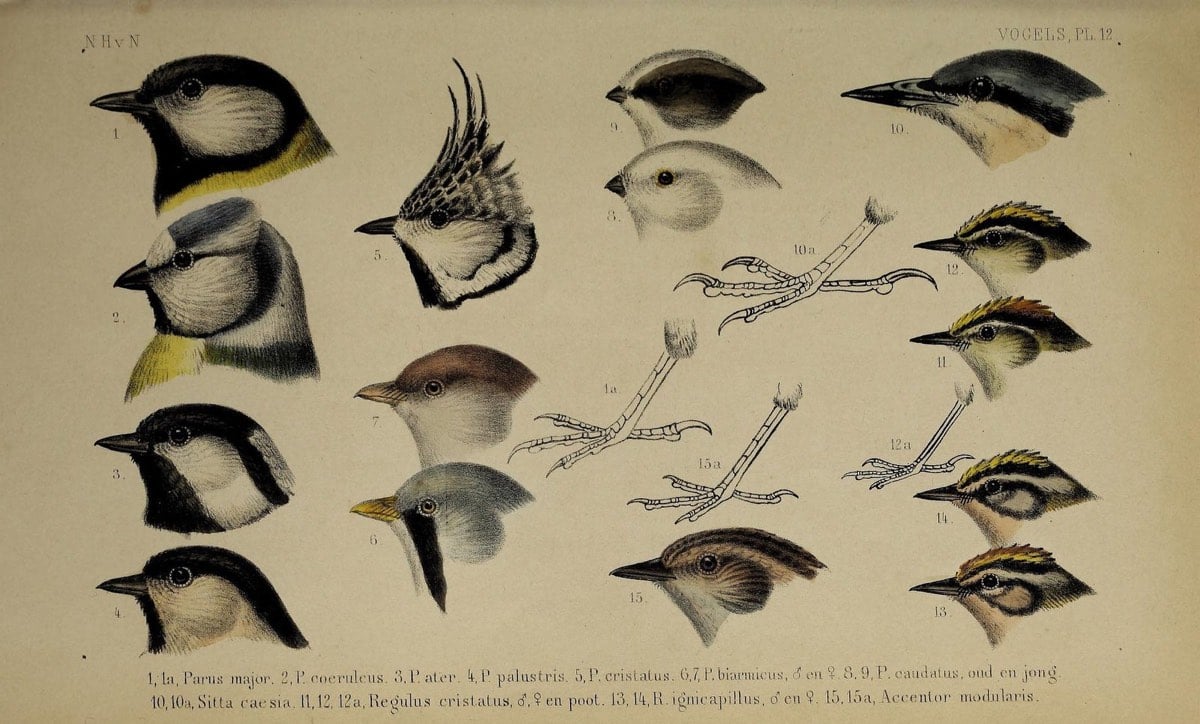

The Biodiversity Heritage Library maintains a huge trove of plant and animal drawings that they’ve put up on Flickr for free.
The Biodiversity Heritage Library (BHL) is a consortium of natural history and botanical libraries that cooperate to digitize the legacy literature of biodiversity held in their collections and to make that literature available for open access and responsible use as a part of a global “biodiversity commons.”
Over 110,000 images are available, organized into hundreds of albums. You could easily lose an entire afternoon in there.
P.S. While the Biodiversity Heritage Library doesn’t appear to be an official participant, Flickr’s The Commons project remains one of the under-appreciated gems of the Web.
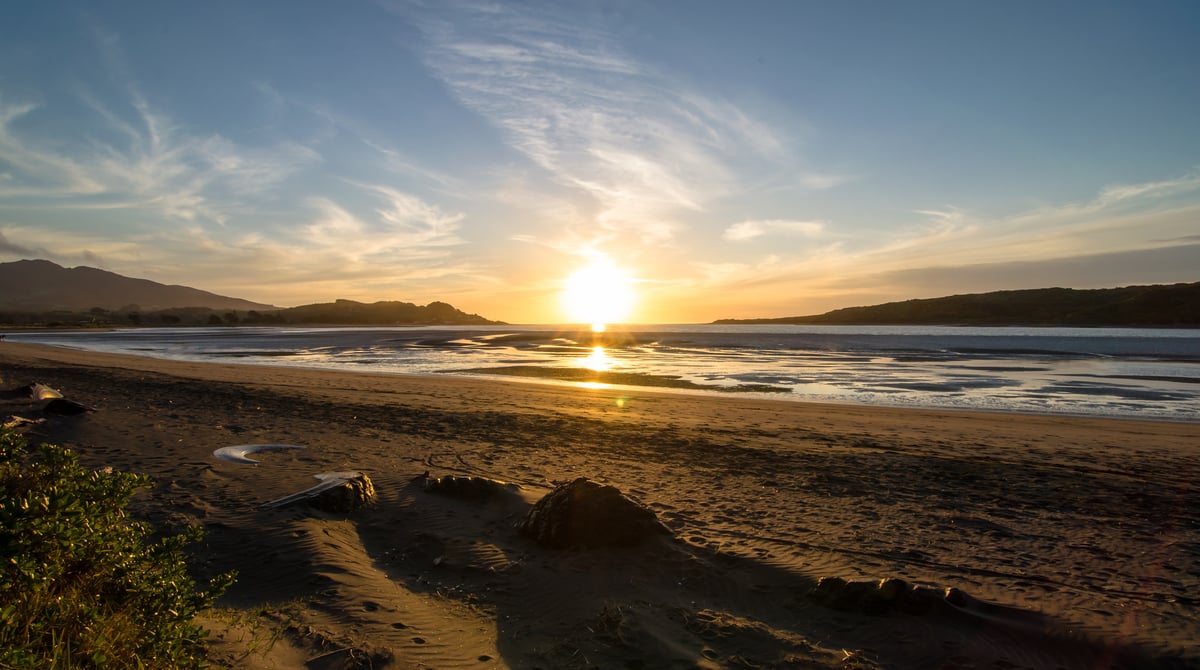
Matt Haughey comes not to bury Flickr, but to praise it.
Flickr represents one of the very best of things in the history of the internet. It was the first popular way to share photos in a social way instead of photos lingering in private accounts online and in the real world in shoeboxes under beds. It brought millions together and helped kick off first the digital SLR revolution, then it was eclipsed by the mobile photography revolution. Flickr—despite being a big corporate entity—embraced open licensing and took on the ambitious goal of being a mirror and gallery for oodles of museums around the globe.
Those values that drove Flickr during its influential peak can be seen in its Explore page, which still knocks your socks off. Matt calls it “an entire year’s worth of epic shots from National Geographic, generated each day, automatically by algorithms.”
Lots of wondrous shots from places I’ve never heard of. Lots of “how’d they even get that shot?!” photos of animals… Instagram has an explore tab but it’s popular music and tv stars and their dogs or it’s brand advertising-driven shots cooked up to sell something. There’s something so completely boring about Instagram’s explore page that makes me ignore it and go back to my friend feeds, whereas Flickr is the opposite: my friend feed is largely silent, but the best of the best page is truly awe-inspiring and at least one photo each day is going to take my breath away.
It is bizarre to think now that Flickr was only active for about a year before it was acquired by Yahoo. For those of us who were on the site then, that year felt like everything.
Jason’s first post that mentions Flickr is from March 2004. He wonders whether Flickr could be used as a universal login (much like Facebook, Twitter, and Google accounts are today). Annotation quickly followed. Then calendar view. RSS feed splicing. Organizr. A public API. The interestingness algorithm. Prints. It was step-by-step, bit-by-bit, but every new feature was a milestone. It excited people, and got them thinking and working on what was next.
Jason even has a remarkable post from August 2004 where he imagines an entire web-based operating system linking different services together:
To put this another way, a distributed data storage system would take the place of a local storage system. And not just data storage, but data processing/filtering/formatting. Taking the weblog example to the extreme, you could use TypePad to write a weblog entry; Flickr to store your photos; store some mp3s (for an mp3 blog) on your ISP-hosted shell account; your events calendar on Upcoming; use iCal to update your personal calendar (which is then stored on your .Mac account); use GMail for email; use TypeKey or Flickr’s authentication system to handle identity; outsource your storage/backups to Google or Akamai; you let Feedburner “listen” for new content from all those sources, transform/aggregate/filter it all, and publish it to your Web space; and you manage all this on the Web at each individual Web site or with a Watson-ish desktop client.
Think of it like Unix…small pieces loosely joined.
That last part didn’t come true; the pieces didn’t join so much as fuse together into something new. The companies listed either took over the world, faded into relative obscurity, or stopped existing (at least for a little while). And then there’s Flickr — which didn’t do any of those things, but changed how we use the web forever.
I usually say that platforms stop being vital, even if they continue to have lots of users, when the platforms stop getting better. It’s a tricky thing: sometimes a ham-handed “improvement” can actually ruin a lot of what made a platform special. Flickr was extraordinarily vital, for years. It still has so much to offer. Sometimes there’s something reassuring about a tool that’s still much the same.
Photo by Tom Hall, via Flickr. Used under a CC-BY license.
From the NY Times, the excellent Jenna Wortham on How I Learned to Love Snapchat. This bit caught my eye:
Its entire aesthetic flies in the face of how most people behave on Facebook, Instagram and Twitter — as if we’re waiting to be plucked from obscurity by a talent agent or model scout. But Snapchat isn’t the place where you go to be pretty. It’s the place where you go to be yourself, and that is made easy thanks to the app’s inbuilt ephemerality.
I wonder if Snapchat’s intimacy is entirely due to the ephemerality and lack of a “fave-based economy”. Blogs, Flickr, Twitter, Vine, and Instagram all started off as places to be yourself, but as they became more mainstream and their communities developed behavioral norms, the output became more crafted and refined. Users flooded in and optimized for what worked best on each platform. Blogs became more newsy and less personal, Flickr shifted toward professional-style photography, Vine got funnier, and Twitter’s users turned toward carefully crafted cultural commentary and link sharing. Editing worked its way in between the making and sharing steps. In 2013, Mat Honan wrote of Vine:
It built a ground up culture that feels loose, informal, and — frankly — really fucking weird. Moreover, most of what you see there feels very of-the-moment. Sure, there’s plenty of artistry that goes into making six second loops, and there are volumes of videos with high production values. But far more common are Vines that serve as windows into what people are doing right now.
Sounds familiar, right? I’m almost positive that when Instagram was first blowing up, similar things were written about it in comparison to Flickr. Now, as Wortham notes, Instagram is largely a place to put your heavily curated best foot forward. But scroll back through time on anyone’s Instagram and the photos get more personal and in-the-moment. Even Alice Gao’s immaculately crafted feed gets causal if you go back far enough.
Although more than a year older than Vine and fewer than two years younger than Instagram, Snapchat is a relatively young service that the mainstream is still discovering. It’ll be interesting to see if it can keep its be-yourself vibe or if users tending toward carefully constructing their output is just something that happens as a platform matures.
Photo-sharing community Flickr turned ten years old this week. At Time, Harry McCracken takes a look back.
Earlier photo sites were mostly concerned with letting you put your pictures in front of friends and family. Flickr did that, too. But from the start, it was building a community of photo lovers around the world who wanted to share images with other photo lovers, as well as thousands of special interest sub-communities. It was about storytelling.
I was at Etech when Flickr launched and was one of the site’s first few hundred users. The photo chat room they launched with was not that interesting to me, but when they turned it inside out, I was hooked. Happy birthday, Flickr.

The British Library has a million images up at Flickr. 1,019,998 to be precise. And it appears that most (all?) of the images are copyright-free. An amazing resource.
Flickr released a new version of their iPhone app today (App Store) and it appears to be a dramatic improvement over their old offering.
We know that some of your best photo moments happen on the fly, so we’ve made it easier to get the perfect shot when inspiration hits. Once you get the shot, there’s a built-in editor to quickly correct, crop, or enhance it with one of the new high res filters.
I haven’t had a chance to check it out in detail yet, but from everything I’m hearing, people are jazzed about it.
From Mat Honan at Gizmodo, an account of how Yahoo bought Flickr and then frittered away all its potential.
Because Flickr wasn’t as profitable as some of the other bigger properties, like Yahoo Mail or Yahoo Sports, it wasn’t given the resources that were dedicated to other products. That meant it had to spend its resources on integration, rather than innovation. Which made it harder to attract new users, which meant it couldn’t make as much money, which meant (full circle) it didn’t get more resources. And so it goes.
As a result of being resource-starved, Flickr quit planting the anchors it needed to climb ever higher. It missed the boat on local, on real time, on mobile, and even ultimately on social-the field it pioneered. And so, it never became the Flickr of video; YouTube snagged that ring. It never became the Flickr of people, which was of course Facebook. It remained the Flickr of photos. At least, until Instagram came along.
The recent uploads by your contacts is the most important page on Flickr and it’s broken. Timoni West is a designer at Flickr and she wrote a brief post on that page’s problems.
The page fails on a fundamental level — it’s supposed to be where you find out what’s happened on Flickr while you were away. The current design, unfortunately, encourages random clicking, not informed exploration.
The page isn’t just outdated, it’s actively hurting Flickr, as members’ social graphs on the site become increasingly out of sync with real life. Old users forget to visit the site, new sign ups are never roped in, and Flickr, who increased member sign-ups substantially in 2010, will forego months of solid work when new members don’t come back.
Many of my friends have switched their photo activities to Instagram and, more recently, Mlkshk. And Flickr’s broken “what’s new from your friends” page is to blame. Both of those sites use a plain old one-page reverse-chronological view of your friends’ photos…just scroll back through to see what’s going on. The primary advantage of that view is that it tells a story. Ok, it’s a backwards story like Memento, but that kind of backwards story is one we’re increasingly adept at understanding. The Flickr recent uploads page doesn’t tell any stories.
As long as we’re talking about what’s wrong with Flickr — and the stories thing comes in here too — the site is attempting to occupy this weird middle ground in terms of how people use it. When Flickr first started, it was a social game around publishing photos. You uploaded photos to Flickr specifically to share them with friends and get a reaction out of them. As the service grew, Flickr became less of a place to do that and more of a place to put every single one of your photos, not just the ones you wanted friends to see. Flickr has become a shoebox under the bed instead of the door of the refrigerator or workplace bulletin board. And shoeboxes under beds aren’t so good for telling stories. A straight-up reverse-chron view of your friends’ recent photos probably wouldn’t even work on Flickr at this point…you don’t want all 150 photos from your aunt’s trip to Kansas City clogging up the works. Instagram and Mlkshk don’t have this problem as much, if at all. (via @buzz)
As I mentioned on Twitter, we got Ollie a camera for Christmas and set it up to post automatically to Flickr. He loves it so far, and it’s been fascinating to see how he sees the world…which is mostly low-angle and mundane. The account is private, but here are a few of my favorite shots of his:
Ollie’s great grandpa

Looking out the door (note the low angle)
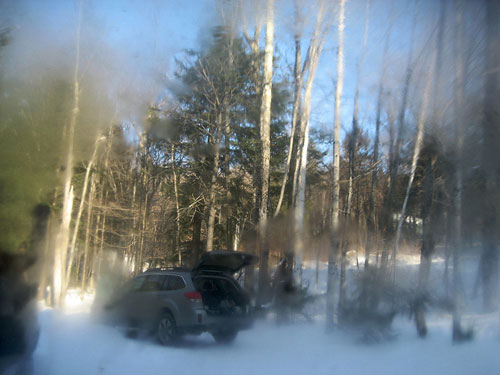
Making espresso
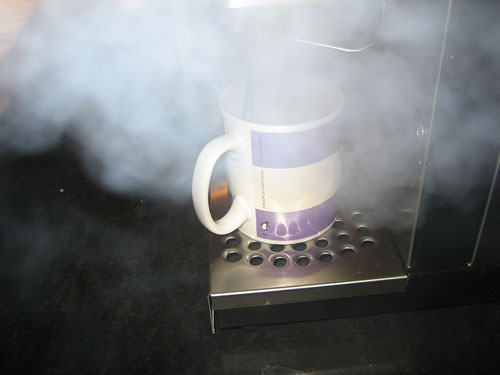
But often the camera is a tool for him. Yesterday morning we were trying to build a boat out of blocks…”the same as we built last week,” Ollie said to me. I couldn’t remember how we’d built the boat last week and Ollie couldn’t really describe it or duplicate it by himself. “We should have taken a picture of it. Then we would remember,” he said. And a couple of weeks ago, his toy computer (basically a glorified Speak N’ Spell) ran out of batteries and when he came running in to the kitchen to tell me, he held up his camera with a photo of the computer in question, “see Daddy, the screen’s not working”…as if I wasn’t going to take his word for it.
After I tweeted about the camera, a number of people asked what setup we were using. We had an old Powershot SD450 laying around, so we gave him that instead of buying a kids camera. Ollie’s three and a half now and pretty conscientious; he doesn’t throw stuff around or smash things so we figured we could trust him with an actual camera. And for the most part, he’s been really good with it. He puts the cord around his wrist so the camera won’t fall on the floor if it slips out of his hands. For the first few days, he was accidentially sticking his fingers in the lens area and that caused the little shutter that covers the lens when the camera is off to stick a little bit, but he stopped doing that and learned how to fix the sticky shutter himself. He sometimes gets stuck in a weird menu after pushing too many buttons, but mostly he knows how to get in and out of the menus. He knows how to use the zoom and can shoot videos. He also can tell when the battery is running out and knows how to remove the battery to recharge it. Giving an “adult” camera to a three-year-old may seem like a recipe for confusion and broken electronics, but I’m continually amazed at kids’ thirst for knowledge and empowered responsibility.
For the automatic uploading to Flickr, we put an Eye-Fi card in the camera. The Eye-Fi is a regular SD memory card with built-in wireless networking…the low-end 4GB card is only $45 on Amazon. And you can link the card to a Flickr account so that when the camera is on and in range of a trusted wifi network, the photos are automatically uploaded. Pretty simple once you get it set up.
Flickr debuts a new photo page today…bigger photos, more navigation options, and a black-background option. It’s still in beta tho…go to any Flickr photo and opt-in for a peek.
Locals and Tourists is a set of maps showing where people take photos in various cities around the world. The results are broken down into tourist photos and photos taken by locals. Here’s NYC:
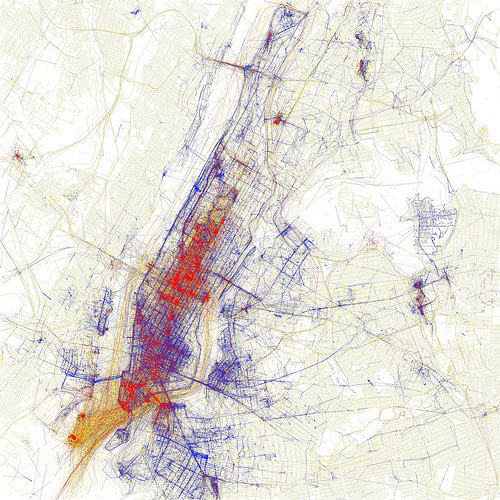
Blue points on the map are pictures taken by locals (people who have taken pictures in this city dated over a range of a month or more). Red points are pictures taken by tourists (people who seem to be a local of a different city and who took pictures in this city for less than a month).
This visualization represents a year in color (summer is at the top, winter at the bottom).
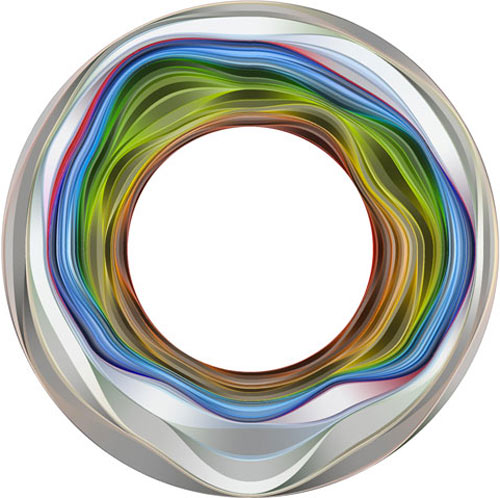
The images were taken of the Boston Common, courtesy of Flickr.
The US National Archives have added a number of photos to the Flickr Commons project. Flickr is quietly building the greatest collection of historical documents on the web.
You can tag people directly in Flickr photos now.
Flickr’s developer blog has a pretty interesting post about how they built a fast client-side search that worked equally well for data sets of 10 people and 10000 people. Ajax with XML & JSON was too slow and using dynamic script tags was too insecure so they rolled their own format and used split to quickly parse it.
Flickr has HD video now (for pro accounts only). Also, those with free accounts can now upload two videos a month.
Idée Multicolr Search Lab is pretty amazing. You select up to ten colors and it returns Flickr photos with those colors. I couldn’t stop playing with this.
Great but waaaay too short article about how Heather Champ and the rest of the Flickr staff build, police, and shape community on the site.
Director of Community Heather Champ doesn’t just guard the pool and blow the occasional whistle; it’s a far more delicate, and revealing, dance that keeps the user population here happy, healthy and growing. In addressing that question of how much to police and how much to let things be, Champ oversees an experiment that, outside some far-flung and sandy exceptions, one rarely sees in such detail. There are no IEDs or snipers in this place, but it’s hard not to conclude Flickr’s conducting a kind of nation-building.
Flickr is an inspiring example of how to run a community site in an era where other sites almost delight in taking zero responsibility for what goes on in their comments and forums.
Of all the things that Flickr has done, The Commons project might be the most significant. If, in two years, there are tens or even hundreds of thousands of old photographs previously unavailable to the general public from collections all over the world — all tagged, geocoded, annotated, contextualized, and available to anyone with a web browser — that would be an amazing resource for exploring our recent history.
Awesome collection of folk graphics and photography protesting Flickr’s decision to let members post short videos. But without the video, we’d miss out on stuff like this. (via waxy)
Flickr users can now upload video to their accounts. I uploaded a video during the beta test but since I’m not a pro user, I can’t show it to anyone now that Flickr’s gone public with the video uploading. :(
Update: Ok, Flickr Pro is back in effect. Still can’t mark the video unprivate. Maybe the video stuff isn’t truly live yet? (thx, heather & adam)
Update: Yep, the video stuff goes live “starting late Tuesday or early Wednesday”.
Update: The video stuff looks like it’s live now. Here’s a video of Ollie crawling that we took a couple of months ago. Videos are limited to 90 seconds…they’re calling them “long photos”. Love that.
This happened while Choire was minding the store so apologies if you’ve seen it already, but Flickr’s new Commons program is quite interesting. For a start, the Library of Congress has put 1500 photos with “no known copyright restrictions” up on Flickr for people to tag and annotate. The LoC’s extensive online image repository has always been exceedingly difficult to use so making images available on the easy-to-use Flickr is a great step forward. The response so far has been pretty good.
At long last, Apple is listed as one of the available brands of camera in the flickr Camera Finder.
This means that you can search for shots taken not only with iPhone, but with the three models of Apple’s original camera line, the QuickTake (codenamed Venus, Mars, and Neptune). Currently, there are no viewable uploaded photos taken with the QuickTake 100 or 150, but there are some from the QuickTake 200.
It’s also nice to see that Merlin’s tree.cx pic made it to the top of the iPhone-taken ‘interesting’ list. (via highindustrial)
Update: A potential reason for the iPhone’s relatively paltry numbers is that when you email photos from the phone, it strips the exif data out which means those photos aren’t counted. I imagine many more people email photos to Flickr from the iPhone than upload them from their computers.
Eye-Fi is a wireless memory card for digital cameras. Once you get it set up, you take a photo with your camera and it’s automatically uploaded to your computer and to Flickr (or another photo sharing site of your choosing). The first thing you notice about the Eye-Fi is that it looks just like an ordinary 2-gig SD card…so tiny that when you use it for the first time, you almost can’t help but examine your camera from all angles to make certain that there are no wires involved. It’s magic.
But can an enchanted memory card make you a better photographer? That is, does it make you want to use your camera more and take better pictures? I’ve been testing an Eye-Fi for the past week, courtesy of my friends at Photojojo (where every order comes with a Blow Pop!). The setup and usage were pretty easy. Not having to fuss with an uploading cord was nice. I didn’t like the requirement of setting up each wireless connection you want the card to use; it should find open wireless access points when it can. But after a week of using the card, I finally figured out the optimal way to use the Eye-Fi:
1. Get a Flickr account.
2. Set the Eye-Fi to upload automatically to your Flickr account with the privacy set so that only you can see it.
3. Use Flickr’s online organization tools to publish, group, tag, or order prints of the keepers and discard/ignore the rest.
Instant online-only workflow…no intermediate “download then find the best ones then upload” steps required, everything happens right in Flickr. The lack of editing tools (brightness, levels, etc.) on Flickr might be a deal breaker for some, but for the rest, it certainly makes it easier to take a lot of photographs and get them up where family and friends can see them.
This is the 2 billionth photo uploaded to Flickr. 2,000,000,000!
How are Don DeLillo, Flickr, and The Most Photographed Barn in America related? Read on, my friends.
After a complaint that the photos on Flickr are “just all conventional, it’s all cliches, it’s just one visual convention after another”, Alec Soth asks where all the good photos are and gets a bunch of responses.
Older posts
















Stay Connected